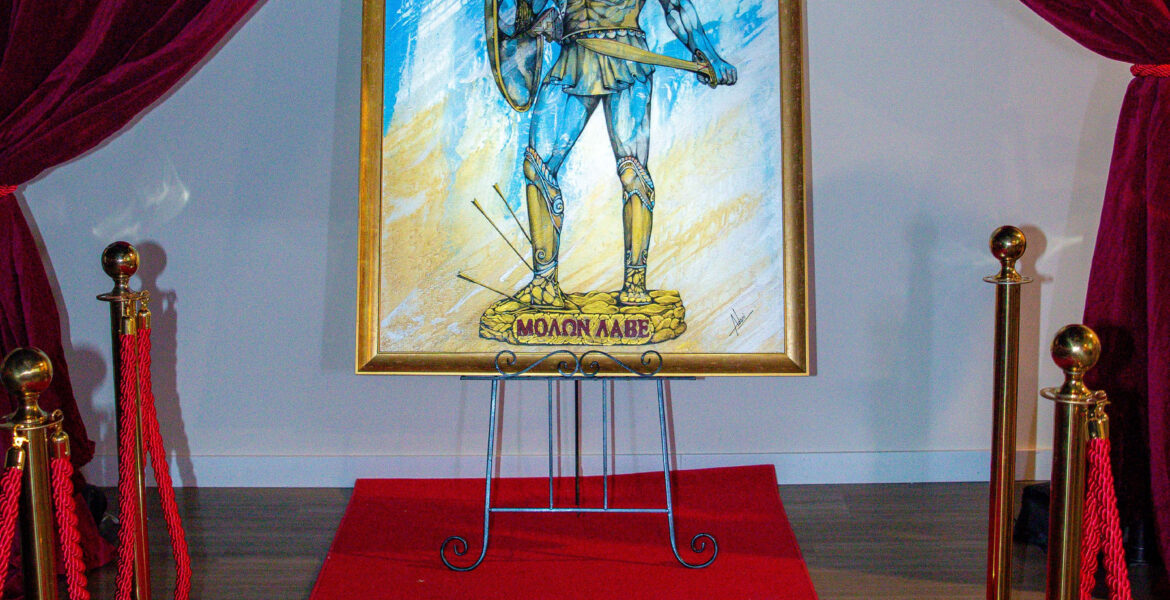Commemorating the 2,500 Year Anniversary of the Battle of Thermopylae
by Katina Rozaklis
Amongst a backdrop of gold and blue misty light, he stands tall and proud, golden armour emphasising his muscular frame. Sword in one hand, his heavy shield in the other, he stares down his enemy. Their arrows pierce the soil at his feet, firmly planted on a rock. Two crimson words unmistakably identify this fearless warrior – Molon Lave.
On Saturday night, in commemoration of the 2500 year anniversary of the Battle of Thermopylae, red velvet curtains parted in spectacular fashion to reveal the epic painting of King Leonidas of Sparta, invoking a sense of pride, admiration, and appreciation amongst the crowd at the South Australian Pan-Laconian Family Centre.
The event was jointly presented by the Pan-Laconian Society of South Australia and the Karitsa Community of South Australia, with almost 300 attendees, including Minister Tom Koutsantonis, Consular General of Greece, Mr George Psiachas, and guest speaker, Dr David Rafferty from the University of Adelaide’s Department of Historical and Classical Studies. Representatives from Laconian organisations in Melbourne, Sydney, and Brisbane crossed borders to witness this momentous event.
King Leonidas is the creation of Adelaide artist, Tony Malavazos, whose pieces are recognised for having personalities of their own: bold, striking, and deliberate, each work is meticulously crafted with careful consideration. Yet this painting is especially significant for the artist and for the South Australian Laconian community, explained Michael Malavazos, President of the Karitsa Community.
“When contemplating this event, it was agreed that we needed a strong South Australian connection to tie this important event with the great Australian state that we Spartan descendants are privileged to live in. It is for this reason that we commissioned the renowned Adelaide artist, Tony Malavazos, who hails from both Laconian and Karitsa heritage, to capture the theme of this event so it can be timeless for generations to come.”
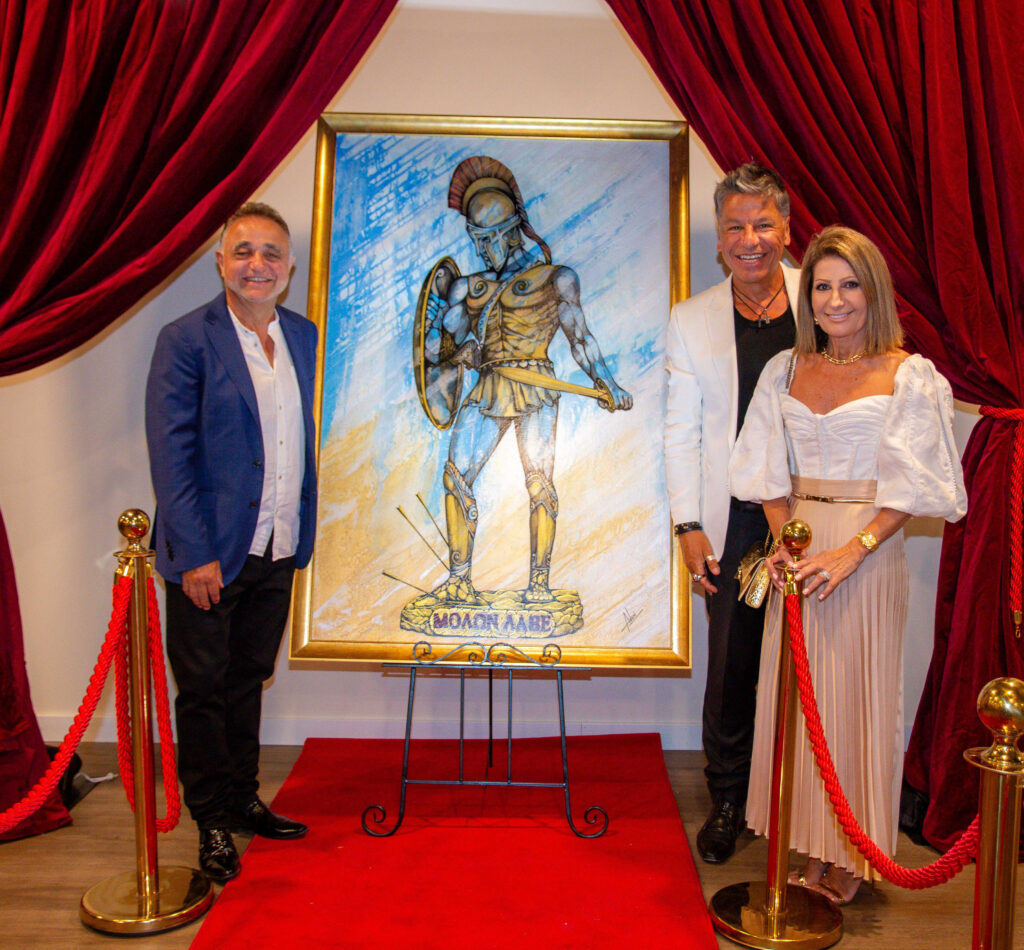
Karitsa, a modest village with a large heart, lays 50 km east of Sparta, on the foothills of the scenic Parnonas mountain range. When Karitsiotes migrated to South Australia, they could never have imagined that their descendants would outnumber the current population of the village. The main purpose of the Karitsa Community is to maintain cultural links with the ancestral village and to provide philanthropic support to Karitsiotes in Australia and in Greece.
With the Mayor of the City of Marion, Kris Hanna, and City of Unley Councillor Stephen Finos present, Michael Malavazos extended his gratitude to both councils for their support for both organisations over the years. In particular, he acknowledged the Unley City Council’s recent financial grant bestowed to the Karitsa Community to prepare a historical publication about the Karitsiotiko migration to the area of Unley, and the long-standing support that the Marion City Council has provided to the Pan-Laconian Society for the works conducted on the Family Centre.
President of the Pan-Laconian Society, Dina Houssos also expressed her gratitude to the councils, and to the organising committee.
The artist understood the importance of his work would be important for many years to come. “Like any Spartan, when I think of the Battle of Thermopylae, I feel a strong sense of pride. It is a part of who we are. I feel privileged that I can use my artistic ability to honour our ancestors and leave a legacy for future generations.”
Malavazos was resolute in capturing Leonidas in his own style – an ‘Adonis Art Leonidas’. “My concept was based around Molon Lave: ‘Come and get them!’. I wanted to demonstrate Leonidas’ fearlessness, both in his stance and his expression. I needed to show that he was a true King – more than just a warrior or soldier. He was a leader, and I needed to show that in every aspect of his stature. He was against the odds before he even left for battle.
It wasn’t just physical; Leonidas, his army, and the other Greeks had to use their mental strength as well.”
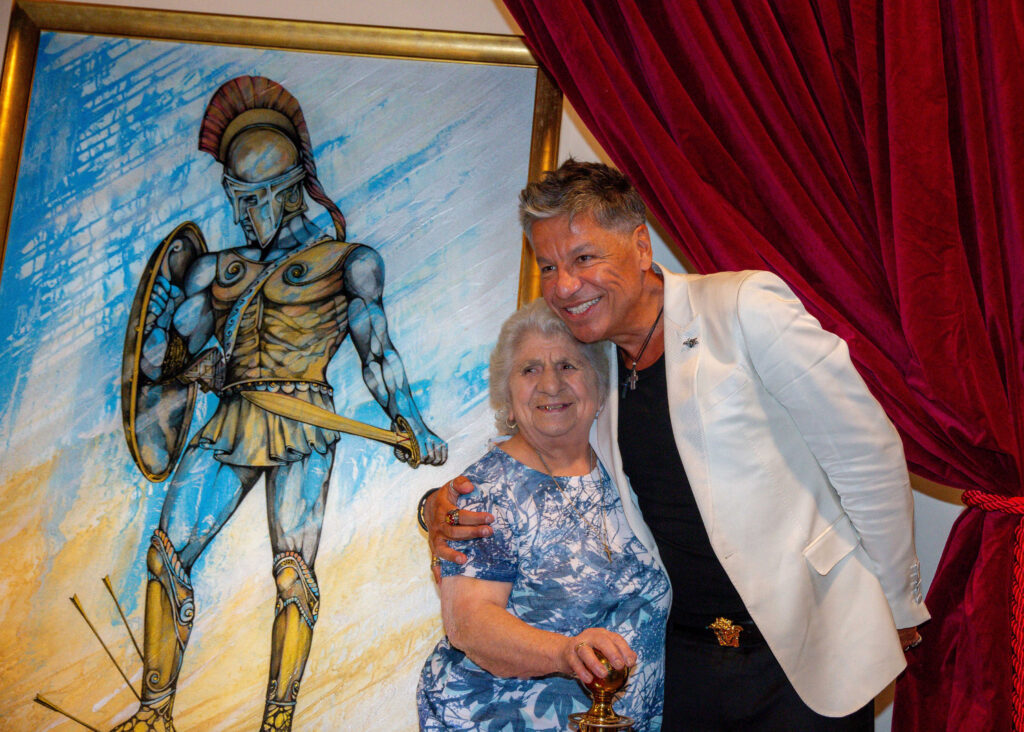
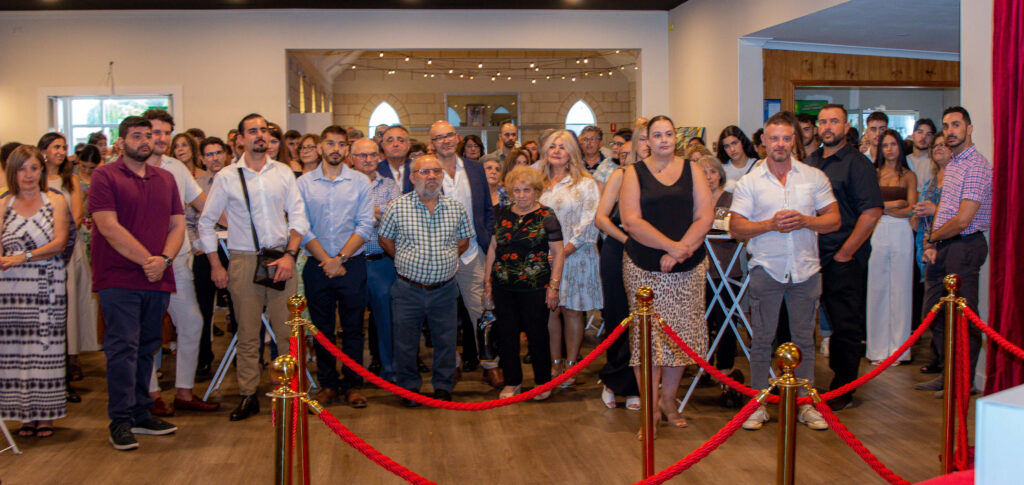
Minister Tom Koutsantonis reinforced the importance of the Battle of Thermopylae, tying Leonidas’ defiance to the foundation of Western civilisation. “if Xerxes had defeated the Greeks, if he had defeated and conquered Athens and all of the Peloponnese, Western Civilisation as we know it would not exist… that defiance lives on in us. It’s no surprise that when Hitler was conquering all of Europe, the first Western country to knock back any invasion by the axis forces was – who? The inheritors of that Spartan defiance.”
Consular General, Mr George Psiachas addressed the influence of the Spartan’s resistance on modern military and political history, especially in World War Two, quoting Winston Churchill’s famous line “hence, we will not say that Greeks fight like heroes, but that heroes fight like Greeks” and Cavafy’s poem, Thermopylae “Honour to those who in the life they lead, define and guard a Thermopylae.”
During his address, Dr David Rafferty discussed the political success of the battle. He identified the collective action model of the heroic last stand, and how the Spartan (and Thespian) sacrifice helped to establish trust between cities for the first time. “It was only by sticking together that the war could possibly be won.” He stated Leonidas’ actions demonstrated to all Greeks the Spartans were serious, that they would sacrifice themselves for something more than just Sparta. “By creating that symbol, that rallying point, that went a long way in keeping the alliance together, so there was enough glue holding them together at Salamis, and at Platea where the same problem occurred.”
Dr Rafferty reinforced the underlying message of the Spartans, “What you say you’re going to do doesn’t necessarily matter very much until you actually do it.” Guests resonated with this statement, nodding in agreement at the acknowledgement of some of the core values of the Greek psyche such as integrity, loyalty, and trust.
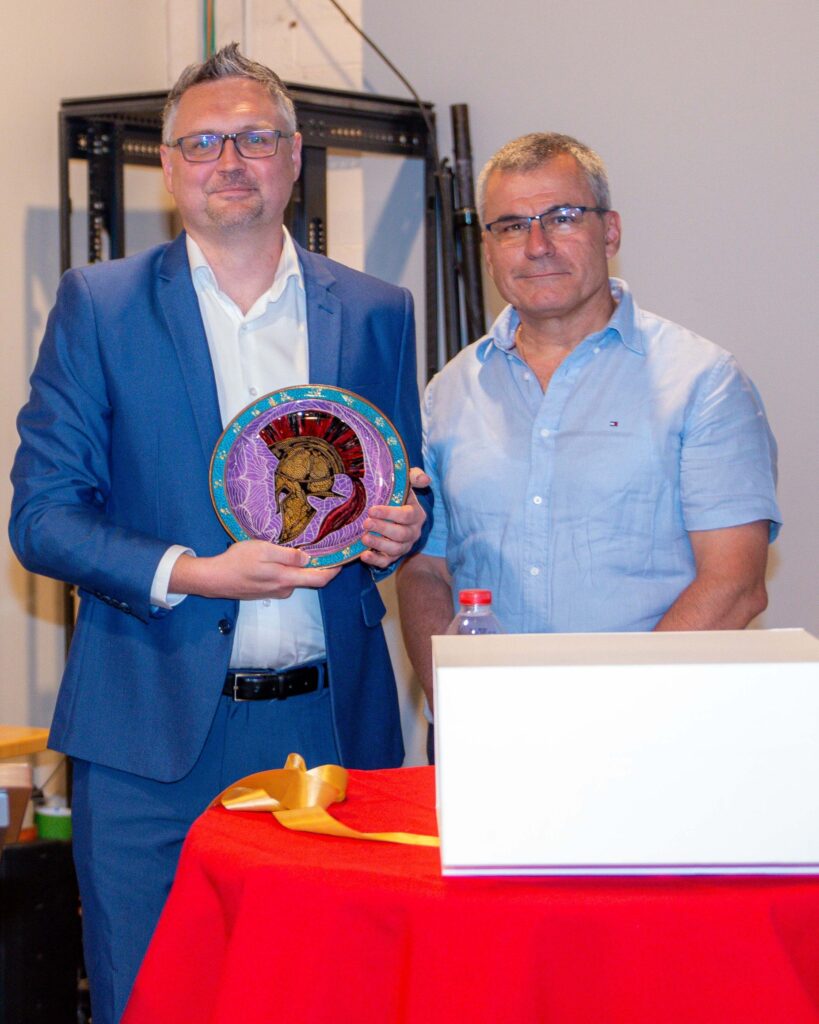


It was this steadfastness and determination that Malavazos wanted to capture in his painting. “When I was approached to create this piece, the concept was clear in my mind, but as I painted, it continued to evolve. Art is like that – what you have in mind can often be different to the final result. You have to trust the process.”
Strong brushstrokes emphasise the dramatic setting. “I started with the background colours and created contrasts to give definition, and then created the outline of our heroic figure. I used a plinth to elevate his status, so I could show him as a King dominating the battlefield. The image is enhanced with transparent rays of light that reinforce his power.”
Malavazos recalls “as a child I was always drawing, even during family meals. I can remember when I was about 6 years old, I drew a portrait of my father, who was shocked that not only had drawn his likeness, but I had started and finished the piece while we were sitting down to dinner.”
His long-time passion for art can be traced back to his school years in both Australia and Greece, where teachers recognised and fostered his artistic talent. “My teachers at Goodwood Primary School recognised that I had a gift and they did their best to develop that talent. When I was 7, our family moved to Greece. With Mum and Dad both coming from Karitsa, it was logical that we returned there. We lived there for about a year, where I was enrolled into the local primary school.”
“One of the teachers to leave an impression on me, even to this day, was Mr Kostas Giannakouras. He has an artistic flair himself, and I think this is one of the reasons why he spent time encouraging my abilities; he made me see that what I had was special. I will be forever grateful for the time that he invested in me, and helping me to see my worth, even as a child.”
The Malavazos family later moved to Sparti, where the budding artist completed his primary education. In high school, he remembers his favourite subjects being ekthesis (essay writing), mythology, history, and – of course – art.
At 16, Malavazos and his family returned to Adelaide and he completed his secondary education at Underdale High School. Throughout this period, Malavazos continued to sketch, however his artistic career changed forever when he commenced at the Adelaide School of Art and had the opportunity to focus on developing his own unique style.
Malavazos’ worked in roles that were far removed from the art world. “For almost two decades I worked in hospitality management at the Adelaide Airport Chairman’s Lounge, and as an Operations Coordinator at aged care facilities. Throughout this time, I continued to paint as a second job. Four years ago I resigned from my role as Operations Coordinator at the aged care facility to focus on my art full-time.”
During the event, Michael Malavazos acknowledged the generosity of Dimitri Tsagouris, stating that his contributions made the acquisition of this piece possible “[he] will remain the owner of this great piece of art but he has requested that it be permanently housed at the Pan-Laconian Family Centre,” a decision in favour with the artist. “This means that he is accessible to the broader community to view and appreciate. It is a powerful piece that not only demonstrates the physical strength of Spartans, but the determination within them. I hope that each Spartan that looks upon this piece feels a sense of pride knowing that this is a major part of their history.”
“It’s one thing for the artist to express an image or concept, however the interpretation is always that of the audience’s point of view. Each person will read it differently; one may see the painting as a portrait of a great Spartan king, while another may view the painting as a metaphor for strength, resilience and leadership. There are many elements to this piece, such as transparent brushstrokes in the background which highlight the iconic status of a king who is almost immortal, and the dominance of gold which symbolises royalty, the sun and life itself, but I’ll leave it to the public to make their own interpretation.”
Over the past few years Adoni Art has gained momentum, requiring Malavazos to focus on his commission-based work, but he still manages to support humanitarian efforts by donating works to organisations that are deeply personal to him. Most recently, he has donated his exquisite painting Religion and Spirituality, which is currently being auctioned online, with all proceeds going to the Karitsa Community and the Pan-Laconian Society to support their philanthropic activities.

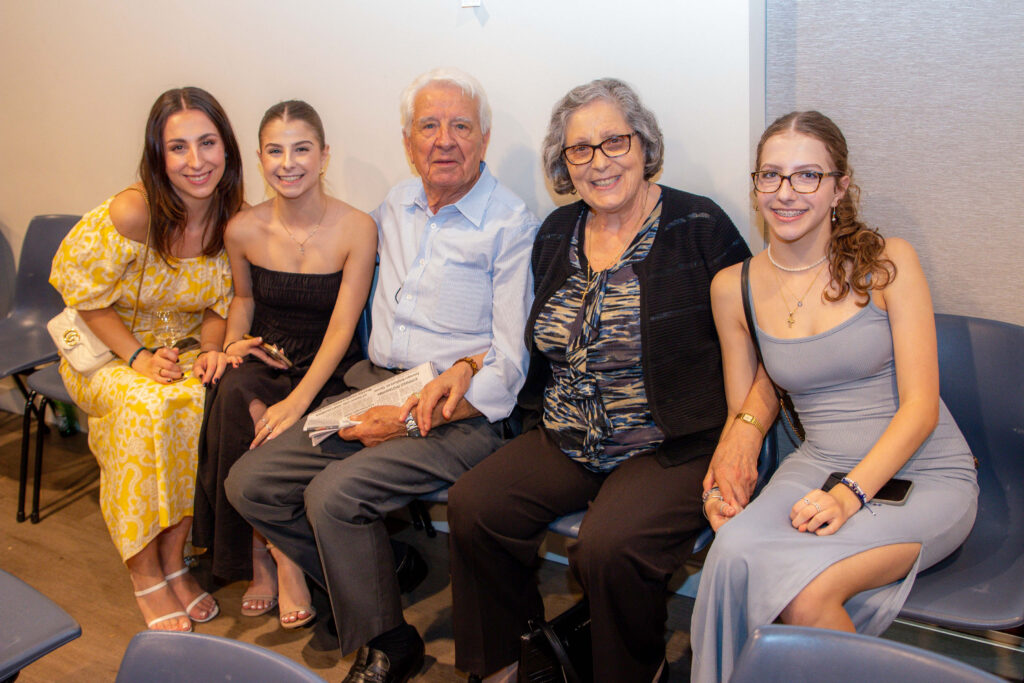
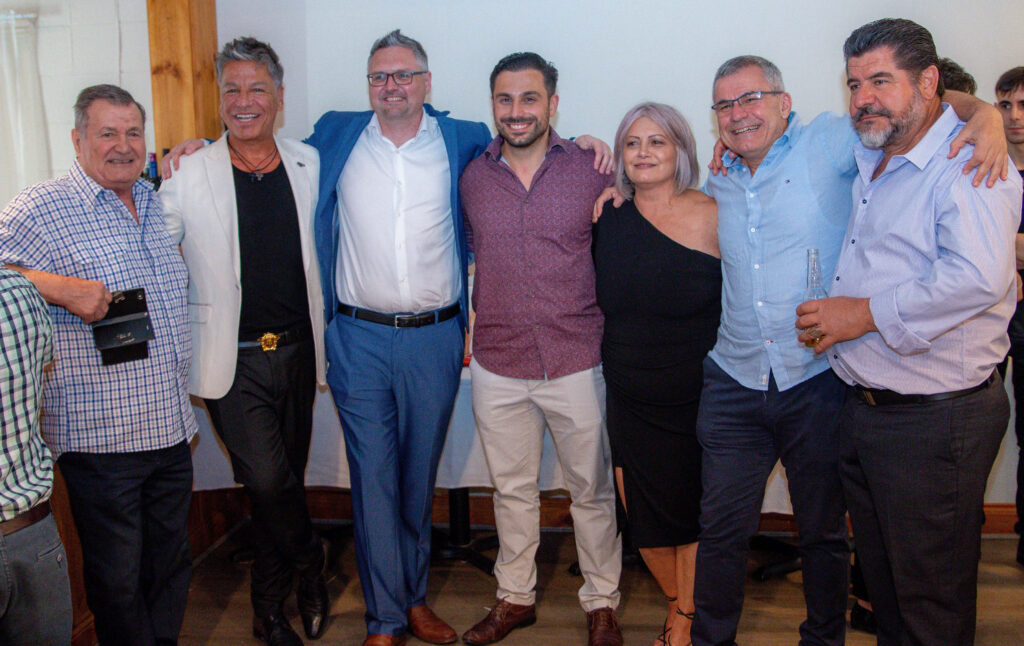
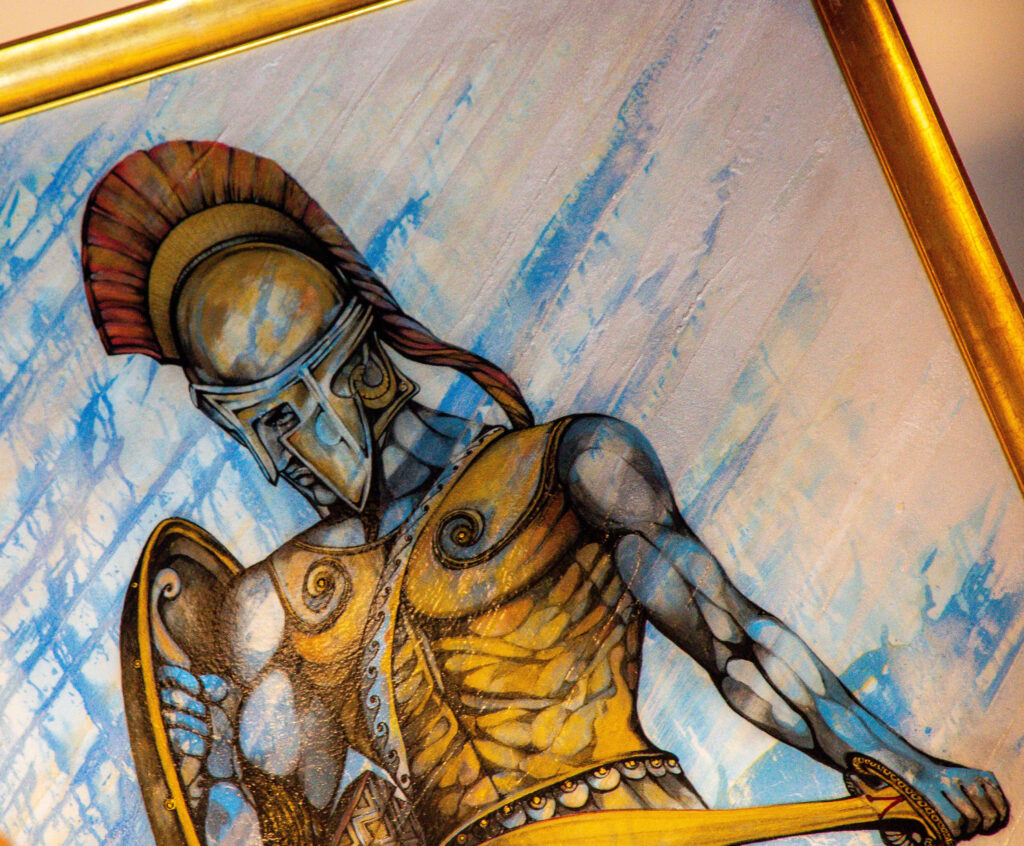
Malavazos describes his painting as a contemporary expression of maintaining faith through the tapestry of life. “Light fills the canvas, creating positive energy, while life’s elements, depicted in colour, merge harmoniously with life itself in the form of leaves and flowers. At the heart of the image, bound together with ropes, a nail and hammer form a crucifix, adorned with a crown of thorns whose stem weaves around the cross to become one with the elements.”
Over 130 of his paintings have been presented in exhibitions in Sydney and Adelaide: Emotions and Dames (2007), Colours (2008), Inspirational Women (2016), and Girls, Girls, Girls! (2018). The artist maintains a strong presence on social media to share his pieces with a broader audience, beyond the confines of exhibitions.
A self-proclaimed perfectionist, Malavazos is always striving to improve his work. “My continuous evolution through life experiences is reflected in my artistic interpretations… I’m constantly refining my unique style and technique with each piece of fine art that I create. I love doing what I do. Sometimes I get physically exhausted, but emotionally, it recharges me – I get absorbed into this ‘other world’ where I forget time – hours can fly by. It fulfils me and keeps me content.”
Malavazos emphatically places one hand on his heart. “I get to express what I’m feeling. If you love what you do, you put your emotions on the canvas – you don’t hold back, you don’t follow the rules. You let go and it comes through your painting. As artists, we channel our energies to express what we are feeling. He pauses for a moment and lets out a little laugh, “and follow what the customer wants!”
He smiles contently, “I can do this for the rest of my life.”
Religion-and-Spirituality
Tony Malavazos’ piece, Religion and Spirituality, is being auctioned online. All proceeds will assist supporting the philanthropic activities of the Karitsa Community and the Pan-Laconian Society.
To place your bid on Religion and Spirituality, visit https://fundraiser.support/Adoni-Art-Tony-Malavazos-Auction, and closes at 7pm CST on 24 March 2024. Terms and conditions are noted on the event website.
Read also Personality Traits Linked to Premature Heart Aging: Are You at Risk?

